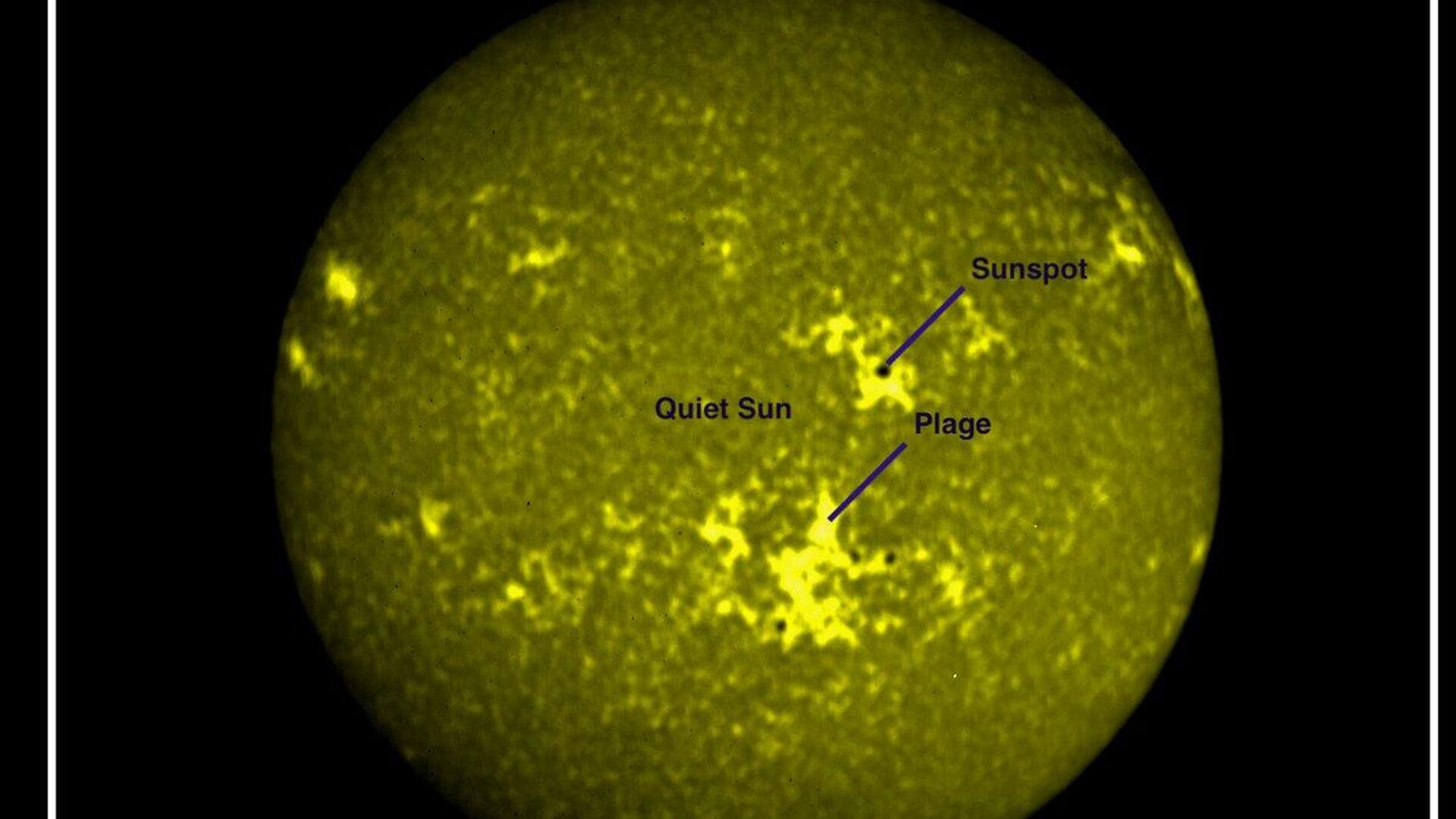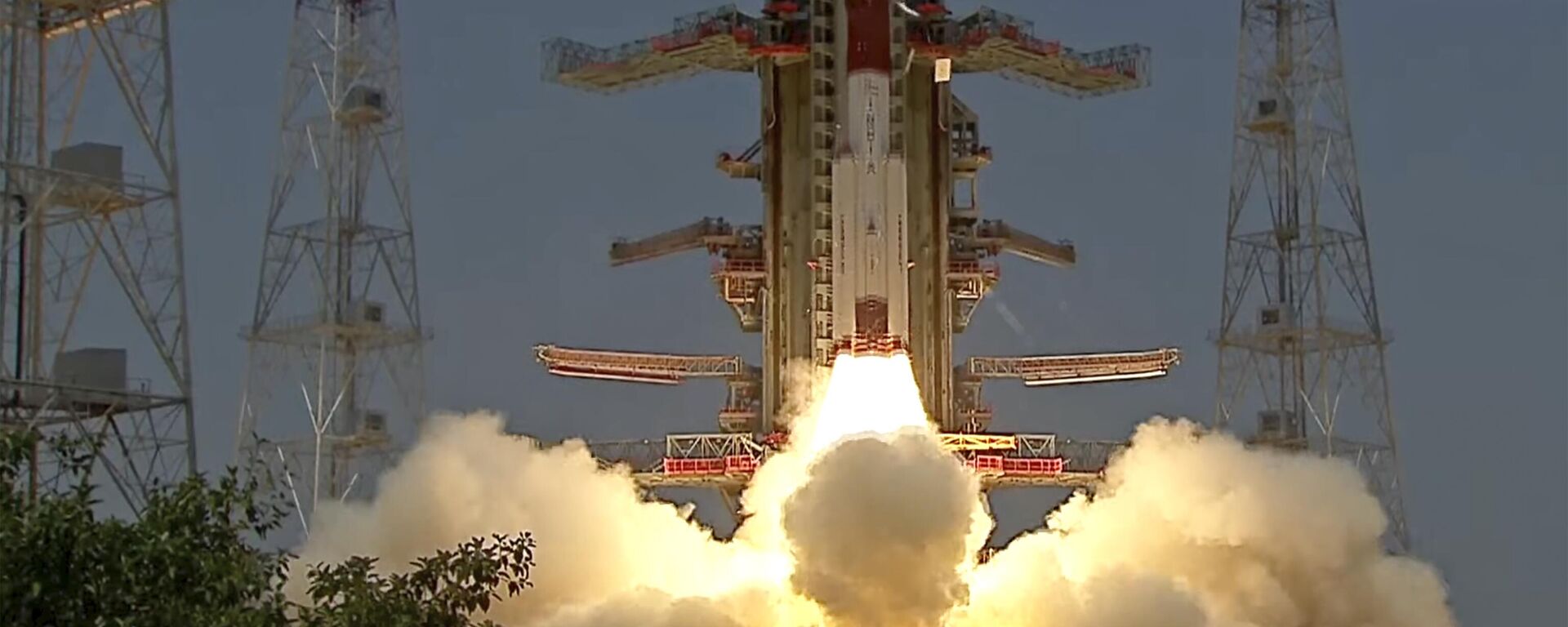https://sputniknews.in/20240106/indias-aditya-l1-research-station-reaches-lagrange-point-for-solar-observations-6109112.html
India's Aditya-L1 Research Station Reaches Lagrange Point for Solar Observations
India's Aditya-L1 Research Station Reaches Lagrange Point for Solar Observations
Sputnik India
India's Aditya-L1 solar observatory reaches a key position in space, marking a milestone in solar research and showcasing the country's advanced capabilities in space exploration.
2024-01-06T17:30+0530
2024-01-06T17:30+0530
2024-01-06T17:30+0530
science & tech
narendra modi
science & tech
india
x (former twitter)
aditya-l1 mission
indian space research organisation (isro)
space satellite
space industry
space exploration
https://cdn1.img.sputniknews.in/img/07e7/0c/09/5773570_0:263:1200:938_1920x0_80_0_0_c3f1462ee384d5a6f3dd44dcaee2ea81.jpg
The Indian research station Aditya-L1, launched towards the Sun, has reached the Lagrange point from where it will conduct observations, announced Sridhara Somanath, head of the Indian Space Research Organisation.The Lagrange point is a unique region where the gravitational forces between the Earth and the Sun reach equilibrium. Although absolute neutralisation of the forces is unattainable due to the influence of other celestial bodies such as the Moon, Mars and Venus, the L1 point provides a stable position for observation purposes.The nation's Prime Minister Narendra Modi congratulated Indian scientists on the achievement.The Indian Sun Study Mission was launched on 2 September last year. The spacecraft carries seven instruments to observe the Sun's photosphere, chromosphere and outermost layers (corona) using electromagnetic field, particle and magnetic field detectors. Once in its intended orbit, the mission's main instrument - a visible-light coronagraph - will send 1440 images per day to the ground station for analysis.The Aditya L1 mission is expected to provide insights into the problem of the heating of the Sun's corona, coronal mass ejections, pre-flaring activity and its characteristics, space weather dynamics, solar wind propagation, particles and fields, among others.
https://sputniknews.in/20231220/indias-aditya-l1-spacecraft-expected-to-reach-lagrange-destination-early-january-5903787.html
india
Sputnik India
feedback.hindi@sputniknews.com
+74956456601
MIA „Rossiya Segodnya“
2024
Sputnik India
feedback.hindi@sputniknews.com
+74956456601
MIA „Rossiya Segodnya“
News
en_IN
Sputnik India
feedback.hindi@sputniknews.com
+74956456601
MIA „Rossiya Segodnya“
Sputnik India
feedback.hindi@sputniknews.com
+74956456601
MIA „Rossiya Segodnya“
aditya, isro, isro, lagrange point, aditya reaches the sun, modi, solar research, space exploration, science, tech, satellite, sun satellite, india space, india sun
aditya, isro, isro, lagrange point, aditya reaches the sun, modi, solar research, space exploration, science, tech, satellite, sun satellite, india space, india sun
India's Aditya-L1 Research Station Reaches Lagrange Point for Solar Observations
India's Aditya-L1 solar observatory reaches a key position in space, marking a milestone in solar research and showcasing the country's advanced capabilities in space exploration.
The
Indian research station Aditya-L1, launched towards the Sun, has
reached the Lagrange point from where it will conduct observations, announced Sridhara Somanath, head of the Indian Space Research Organisation.
"Aditya-L1 reached the L1 point on January 6 at 16:00 IST, and we are going to make the final maneuver to keep it there," Somanath told the Indian media.
The Lagrange point is a unique region where the gravitational forces between the Earth and the Sun reach equilibrium. Although absolute neutralisation of the forces is unattainable due to the influence of other celestial bodies such as the Moon, Mars and Venus, the L1 point provides a stable position for observation purposes.
The nation's Prime Minister
Narendra Modi congratulated Indian scientists on the achievement.
"India creates yet another landmark. India’s first solar observatory Aditya-L1 reaches it’s destination. It is a testament to the relentless dedication of our scientists in realising among the most complex and intricate space missions. I join the nation in applauding this extraordinary feat. We will continue to pursue new frontiers of science for the benefit of humanity," Modi posted on X (formerly Twitter).
The Indian Sun Study Mission was launched on 2 September last year. The spacecraft carries seven instruments to observe the Sun's photosphere, chromosphere and outermost layers (corona) using electromagnetic field, particle and magnetic field detectors. Once in its intended orbit, the mission's main instrument - a visible-light coronagraph - will send 1440 images per day to the ground station for analysis.
The Aditya L1 mission is expected to provide insights into the problem of the heating of the Sun's corona, coronal mass ejections, pre-flaring activity and its characteristics, space weather dynamics, solar wind propagation, particles and fields, among others.


